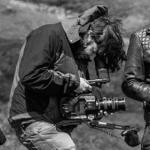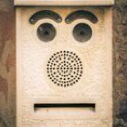Leaderboard
Popular Content
Showing content with the highest reputation on 12/04/2015 in all areas
-

New music video - primarily shot with V-Log L
HelsinkiZim and 6 others reacted to AaronChicago for a topic
Every shot in this video except the rooftop was shot with V-Log L 10 bit on the GH4/Assassin. Thanks to Sandro and Nicolas Maillet for helping me with a couple of Twixtor shots.7 points -
fascinating i did this, and i gotta say, i found the look of the show – including all aspects of art direction which appear on screen – to be completely forgettable and boring i watched several different clips from season one and two and my general critique is that color and lighting are not being used dramatically in terms of storytelling in a lot of the shots dont get me wrong, its clearly technically sound, but its boring but boring in a very pretty, attractive way, which forces you to look at it more than through it – like a window. and this is a disconnect in terms of immersion and suspension of disbelief – storytelling in general it also looks too much like crappy-poo reality, which we all know too well so my assessment is that you would like this show more if color was used in a more meaningful way let me blow your mind with an analogy: which is better? why? more here4 points
-

Olympus E-M1 and E-M5 II review revisited - massive new firmware updates and speedy Metabones AF
Jimbo and 2 others reacted to Andrew Reid for a topic
Went and got the E-M5 II with version 1.0 firmware instead, will try shooting a test scene in V1 then upgrade to V2 and see what the difference is.3 points -
Well I suppose if you only ever work on jobs with six figure budgets then I can see how you can come to that conclusion. But if you've ever spent any time working on sub-10k jobs, or events, weddings, some online content, even reality/bts for TV, you'll find all sorts of pros shooting all sorts of cameras, using all sorts of adapters. And that's a lot of working professionals doing good work.2 points
-
Yep. The E-M1 is indeed a creative tool2 points
-

Nikon bought Samsung NX mirrorless tech. End of Samsung NX (?)
Julian and one other reacted to TheRenaissanceMan for a topic
This is ridiculous for so many reasons...2 points -
If you crank the dial to 11 and leave it there, it loses its meaning/impact. Nothing wrong with using color saturation judiciously, but its ever-presence in season 2 pulls me out of the story. Not so much that I won't stop watching, but enough that I'll complain about it2 points
-
New music video - primarily shot with V-Log L
AaronChicago reacted to Inazuma for a topic
Great video. And the song is giving me goosebumps for some reason!1 point -

Nikon bought Samsung NX mirrorless tech. End of Samsung NX (?)
TheRenaissanceMan reacted to M Carter for a topic
Oh, please. The only thing that's kept me from buying a BMC (original cinema camera) is sensor size, and I'll eventually find a used one with a speedbooster, they show up every week. That's a camera that excels at pretty-much one thing: really pretty footage that can be graded like mad, for projects that don't need extensive keying but beautiful IQ on a "let's try to avoid a bunch of rentals" budget. So you're saying a "professional" would, what, go hunting for wide primes with no distortion vs. adapting lenses they already own? I've seen speed boosted Zeiss and Nikkor AIS 28's on that sensor and it's lovely. I'm a "professional" - I make my living from pitching concepts, writing scripts, and shooting or animating commercial (IE, promotional vs. entertainment) projects for businesses, including some good sized brands. Sad to discover that owning a speedbooster for a specific purpose would make me an amateur.1 point -

Nikon bought Samsung NX mirrorless tech. End of Samsung NX (?)
TheRenaissanceMan reacted to Husah for a topic
Turns out the rumor was fake. Samsung UK denied any Nikon acquisition of NX system. Also, Samsung US has said they won't be pulling out of camera business. What happened to the claim that EOSHD doesn't post rumors? That's two rumors in a month, both false1 point -
Great example, Kaylee. I haven't seen a side by side like this before. I've seen recoloured single frames from films, but a single frame from a film means very little when you don't have the context of the story. The left hand side, definitely, because instantly in that first frame I was on edge because of the red, which I should be because this is a dangerous scene. Also in the first frame the whole background is washed out in red. The red is the element of contention, but also the red turns the human in a cage into an inactive background object, better highlighting the joker as the subject. On the right hand side there is almost too much detail about the cage (because of the colour) and your focus is torn; is joker talking to the guy in the cage or what? Is he going to raise his head? No, he's not, he's beaten, he's defeated. The colour in the left better communicates this. Also the last frame. In the right hand image the splash under Joker and the coke can pull the eye away from what's important. They are great details to set the environment, but the colour on the left turns them into background objects leaving your subconscious to pick up the details while your eye is drawn to what it should be. Also the colour adds ferocity and more movement to the frame.1 point
-
CIPA numbers aren't broken down by manufacturer, but looking at these numbers for April, mirrorless manufacturers don't sell as many cameras as DSLR manufacturers. I'd hazard a guess and say that Nikon sells more DSLRs than at least Blackmagic, Panasonic and JVC combined. http://nikonrumors.com/2015/06/08/spike-in-dslr-camera-shipments-in-april.aspx/ As for mounts and camera size, I have two observations. My D750 is only marginally bigger than my GH4, and the difference in weight pretty much disappears when I mount a Speedbooster and a Nikon lens to the GH4 vs putting that lens on the D750. There's a reason that most of Sony's e-mount are f4 lenses -- f2.8 lenses would be huge compared to the body. http://cameradecision.com/sizecomparison/Panasonic-Lumix-DMC-GH4-vs-Nikon-D750-size-comparison.jpg But with mirrorless I have access to an EVF that lets me see exactly what I'm shooting. I can have a true silent mode like I have on my GH4 so I can shoot BTS stills on motion sets without a bag. I can have better video, both in quality and in ergonomics. These are also features that make mirrorless the future, size isn't the only thing that's great about mirrorless. For ultimate reliability you want the least number of places where something can fail. Adaptors means one extra link in the chain, and each link is a potential point of failure -- no matter how expensive or well engineered it is. And let's be perfectly honest, my Speedbooster rattles, and I've used other Speedboosters that also rattle. They tolerances are good, but not mindblowing. I've never had a problem with my GH4 + Speedbooster combo, but that doesn't mean I don't take the 12-35 with me as a backup. I like using a range of lenses as well, which is one reason I chose a GH4. But if my job was to pump out corporate video after corporate video, or one event after another, or if most of my work has a reasonable budget, I'd probably get a C300 with a set of Cinema Primes and be done with it. Which isn't to say that you're wrong, but its just that you're willing to go the extra mile to find the look you want for a project, whereas lots and lots of people just need a reliable piece of equipment that works exactly the same way, and pumps out the same quality, time after time, with no surprises. I lean towards the no surprises camp, I'm willing to trade versatility for not having to have an uncomfortable conversation with my client. All I'm really saying is that there is a huge market for people who are conservative with equipment, who are risk averse to any equipment changes that has the potential to hurt their business. And those are the people who I think would prefer an F-mount Nikon mirrorless over a brand new/different lens mount.1 point
-

Nikon have 3 main options. With respect to the alleged take over of Samsung.
Marco Tecno reacted to tupp for a topic
Again, using a shallow, versatile mount does not negate the use of their old lenses, and there is no need for a distant F-mount with a mirrorless system. So, (if they are smart) they might want to change that so that they have a compact, versatile camera that sells more units and that could "change the game." They would still sell "a ton of" lenses for their DSLRs. Making a fat mirrorless camera might not sell, and thus would not sell many F-mount lenses anyway. A shallow mirrorless camera would probably sell more. Blackmagic, Sony, Panasonic and JVC have been very successful selling cameras that make it easy for people to swap different brands of lenses. Don't know if the Nikon folks are smart enough to realize all of these points. Tell that to the pros who are using Blackmagic M4/3s cameras, Sony E-mount cameras and Panasonic M4/3s cameras with various lenses. By having a shallow mount, nothing is stopping consumers from using "whatever lens came with the camera." Nikon could make a separate lens set if they really wanted to, or they could just make a fancy adapter for F-mount lenses. Furthermore, consumers can keep using the pre-existing DSLRs and mirrorless and compact Nikon systems. Ultra Primes with a $1000 precision adapter aren't reliable? Also, if you are thinking of the still photo market, the still pros are probably not interested in mirrorless. I am afraid that they might see it that way, as most corporations these days are myopic, driven mostly by immediate sales and short-term bottom-line. In regards to pros who already have a bunch of F-mount Nikkors, I am one of those. I have seven Nikkor lenses and two Nikon cameras. Do I want a camera with a Nikkor F mount instead of with a very shallow versatile mount? -- HELL NO!!! I use lenses for their look and performance, so I want a camera that can accept as many different lenses and adaptors as possible! Not really. Not if they are smart (and not as desperate as you seem to portray them to be). Again, it is doubtful that most pro still photographers would go for a mirrorless system at this point in time.1 point -
They'll stick their crappy F mount on there and kill any chance of the camera being popular with lens heads. I love to think they'd make a mount with an ffd of 20mm or less and then sell f-mount adaptors to those who want to use nikon glass with electronic contacts. the short mount would allow metabones to manufacture a suitable speed booster as well as adaptors for almost every lens ever made. M4/3 and e-mount are where it's at. Sony even do a e-mount to a-mount adaptor. copy that and you;re onto a winner.1 point
-
My ultimate question and "thank you" thread.
ken reacted to Bioskop.Inc for a topic
What editing program are you using, because when i've cropped anamorphic footage using FCPX it stays exactly the same sharpness. What you need to do is make a custom timeline & then stretch the footage by 200% - the timeline will cut the edges off for you & you should still have the option to move the image from side to side to re-frame. Personally, i'd stick with your Animex & the Pocket. If you need slow-mo, then you could always ramp the fps to the max & still achieve something ok. I've tried the slow-mo feature in FCPX with 24fps footage & its not too bad - but i hate slow-mo, its over-used & most of the time it doesn't add that much (its become a gimmick at best). Anamorphic obsession/curiosity can take you to interesting places & you can spend way too much cash just experimenting on failed projects. You've already got a good set up, so use it - it really isn't going to get better than the BMPCC, with or without an anamorphic lens.1 point -
There 3 main benifits as far as I can see. 1. Future proofing as you already mentioned. For example the F35 has an s-gamut colorspace which is much larger than Rec709. Aces is even larger so by going from s-gamut to aces you can retain that extended gamut for future devices that could utilize them. 2. Ease of export/switching between output colorspaces. you can open a project graded on a Rec709 monitor on a computer with a P3 or Rec2020 monitor and all you have to do is switch the display transform you the proper format and everything will display correctly, same thing is true when exporting for different colorspaces. 3. All footage starts with a nuetral base. One of the nice things about aces is that it has standard input transforms that are designed to convert footage from a specific camera into the aces color space so you end up with footage that is neutral. There no unexpected results or looks that are transfered from luts. This is mainly usefull for log shooting cameras and you end up with footage that is more closely matched if using different cameras. So far I have found that this aces techique in the linked blog post produces the most neutral/correct footage from the F35 of any other technique so far. In order from best to worst in Resolve I ranking them like this. 1. Aces 2. auto color matching via color chart. 3. Slog to Cineon, Arri LogC to Rec709. For me my main interest is having a way of de-logging s-log/s-gamut footage from the F35 and getting a neutral image without adding a look which ACES shows promise. The biggest downside so far is that it appears using ACES doesn't work well with film emulation luts. They are designed for Rec709 and don't transfer properly in ACES as far as I can tell.1 point
-
Depends what eyes you are watching with, a general 'non technical' viewer may not be very articulate in expressing the technical proficiencies or deficiencies of a production, they will simply like or dislike the viewing experience - Be immersed or 'taken out' of the show/film by the presentation experience. General audiences do not care (nor should they) about what camera,format, post production process was used for a TV or film production, for them it should support and serve the story,mood and vision of director and DP and to all intensive purposes be nearly invisible to them. For example, Most audiences don't even realize that they have motion smoothing on thier TV's as a default setting in some cases. But audiences are more and more technically savvy now to what higher end productions 'should' look like - they have an expectation of quality now with high-end TV shows that often rivals film production standards. It is often true that 'style over content' can be seen - often in TV, less so in film - where generally time and budget is smaller so less time is available to perfect everything from art department to lighting, making a cheaper emulation of bigger budget shows or films fall short of the results of weeks or months of pre/post production time. There are many reasons why films take so long to make, when a TV show employs similar aesthetics they sometimes fall short and audiences can tell. This is often a trap I see happen in low budget film - when trying to mimic the style of a bigger budget production but without being able to see why it works. 'Greengrass shoots shaky handheld?...cool, let's shoot our entire film handheld...even for the dialogue scenes'! Broadchurch is a show that employed a great deal of real locations in the South west of England, shooting in summer time - where it can be very visually attractive. richg101 on this forum lives in one of the seaside towns (Clevedon) where they shot a decent portion of that show, and from his stills and videos from over the years you can see how nice it can be made to look. 'The Remains of the Day' and 'Never Let Me Go' are notable movies shot there. Production value on screen are instant as soon as you shoot in interesting locations, Broadchurch was fairly unique in that regard for a UK drama often only augmenting natural light to get filmic results. Being relatively local and knowing people 'in the biz' who worked on that show, it's very clear about the constant battle with turnaround times for these shows have so it comes as little surprise that the final 'look' can be compromised to those who may be more opinionated on aesthetic values of film or TV production. Often the grade is where things get better or broken, in TV it is often a limiting medium to go too crazy - as there are still legal limits to broadcast and people will complain that an image is too dark for example, even when it is an artistic choice for a noir feel....people want mediocre which is why most dramas (at least UK ones) look like they are graded in the same bay session as the commercials either side of the show - often looking too sickly saturated, or too flat and bland to not risk little 86 year old dorothy in Aberdeen to complain about not being able to see what's going on in a moody drama. Saying that (and being a bit biased) UK drama can have the most diverse and interesting looks when it is allowed to. Channel 4's 'Black Mirror' / 'Utopia' and similar shows are visually outstanding, especially compared to primetime 'Broadchurch' type shows that always have the pressure of broader appeal and trying to employ 'commercial' styles that does not always compliment story or theme.1 point
-
Sherlock has a ton of shallow depth of field. Don't know if it has really annoyed me, but it's noticeable. while the show was still decent I didn't mind it . the shallow depth of field and constant camera movement in Scandal is just hilarious. Always weird to see what works and what doesn't. Some of my favorite shows have "terrible" image quality (Peep Show, The League, It's Always Sunny). Fincher's Gone Girl looks pretty standard and nice, nothing to write home about for cinematography, but I like the grade, even though.. it's pretty much all green and underexposed. I enjoy a bit of undersaturation and deeper depth of field.1 point
-
Very interesting tugela. Now let's come back to reality. When using a speedbooster you are in the case where you have a lens that has an image circle larger than the one needed to fill the sensor. The speedbooster "takes that circle and compresses it", this means the aberrations will also be scaled and you end up with more resolution. It will not be as good as using a bigger sensor, but it will be sharper than using the lens without the speedbooster. http://www.metabones.com/assets/a/stories/Speed Booster White Paper.pdf check fig 21 for a real world sample You don't have to thank me, just say something coherent.1 point
-

Blackmagic Micro Cinema Camera
IronFilm reacted to TheRenaissanceMan for a topic
Maybe it's just the forumite echo chamber, but everyone seems to bring up battery life the moment I mention Blackmagic and conveniently forget about it when they recommend the A7S (II). I was on a shoot with a guy the other day, and he said in the cold conditions here in Wisconsin, he has to change the battery on his A7S every 20 minutes. That's outrageous. I totally see where you're coming from. Shot in its sweet spot, that 4K sensor produces exquisite results--especially those magical skintones. https://www.hurlbutvisuals.com/blog/2014/12/director-of-photography-blackmagic-4k-ursa-tests-part-1/ https://vimeo.com/1391305571 point -

It's Christmas!! New music video I shot on the RX10 II
maxotics reacted to Oliver Daniel for a topic
Here is the first ever project I shot completely on the Sony RX10 II. It's a traditional low budget British Christmas video, quite the opposite of my usual stuff. Shot in Slog2. Slider is Edekrone SliderPLUS v2. Lighting is Kino Flo and Dedo. Edited and graded in FCPX. Crew was me, Director, make up artist and a couple of assistants. (Unfortunately I have since sold both my RX10 II's as the sensor aesthetic wasn't right for me).1 point -
They'll build something with Samsung tech that can make use of the Nikon F- mount. Anything different from that would be a surprise.1 point
-
That functionality would definitely help me to convince my wife that we need to buy it. I liked the Lilliput, It seems very nice. Thanks! If someone release a Smartphone or tablet with HDMI input, will be the end of field monitors. Imagine the ton of possibilities with apps and wifi transmissions. I'll take a look. Thanks!1 point
-

Nikon bought Samsung NX mirrorless tech. End of Samsung NX (?)
Xavier Plagaro Mussard reacted to Jimmy for a topic
Speed to market, an instant range of well rated, fast lenses with a good AF system (compared to their current mirrorless lens range, which is dreadful). They would also have the benefit of being instantly popular with anyone invested in the NX system. I guess it depends on whether Nikon have any interest in FF mirrorless?1 point









